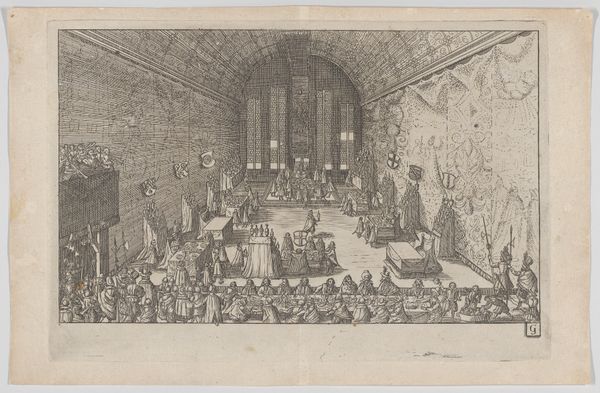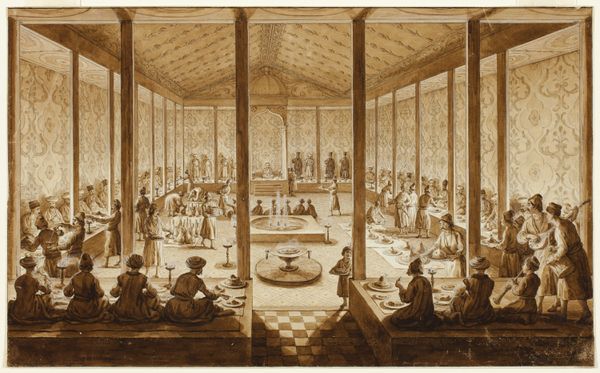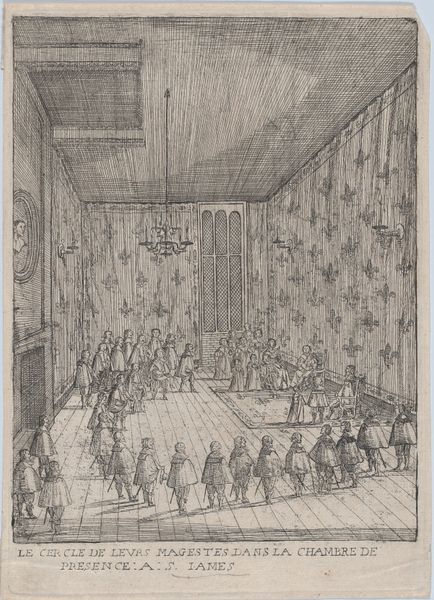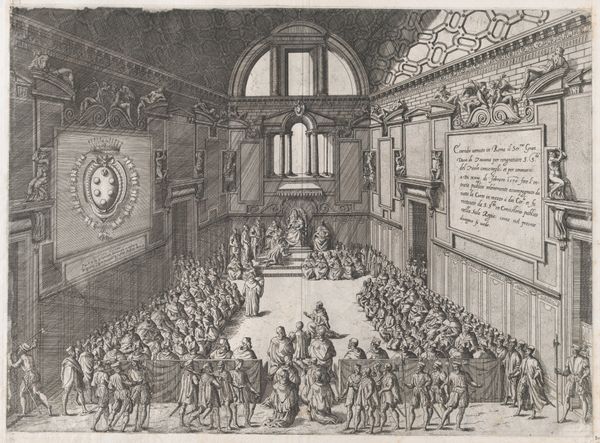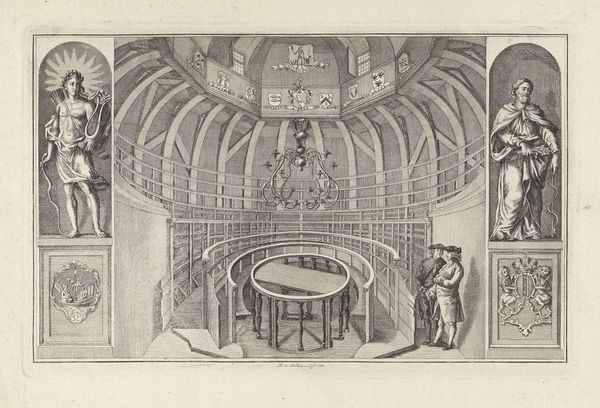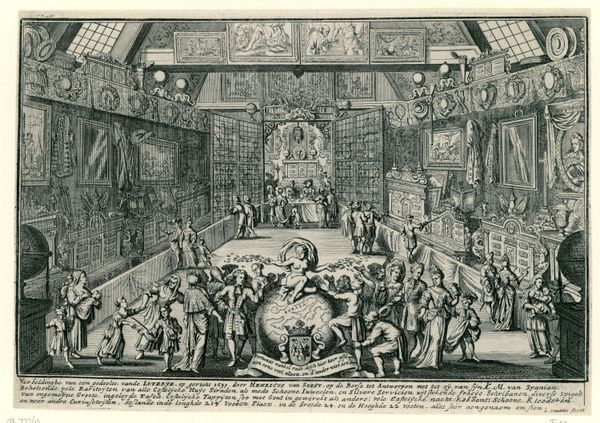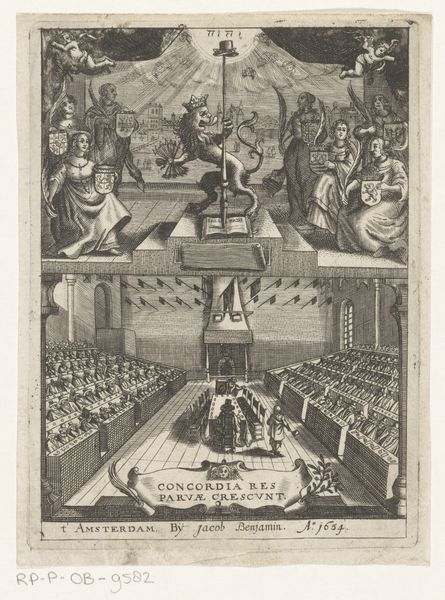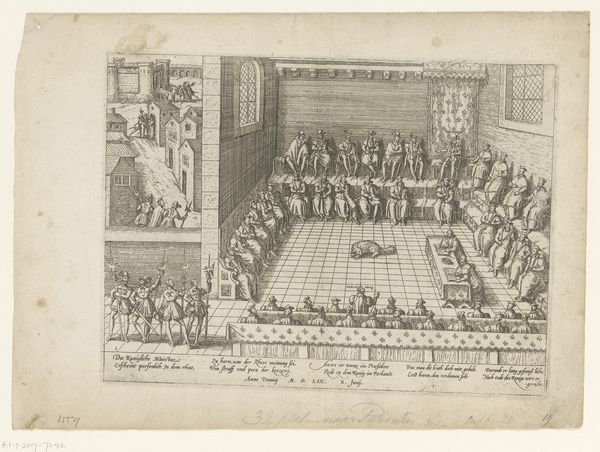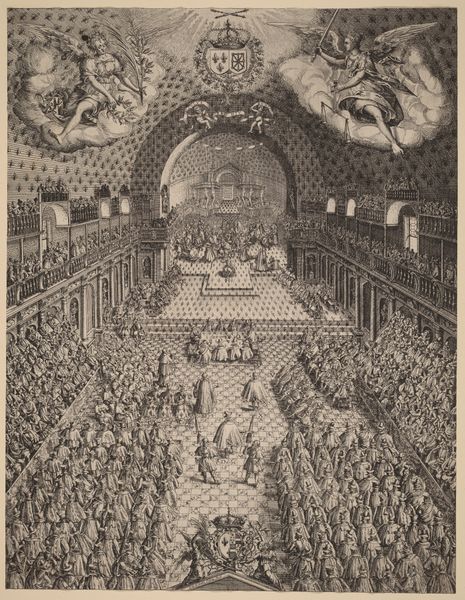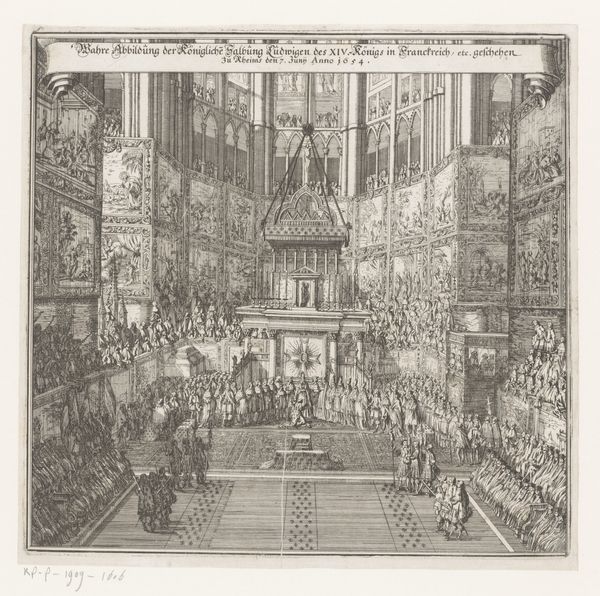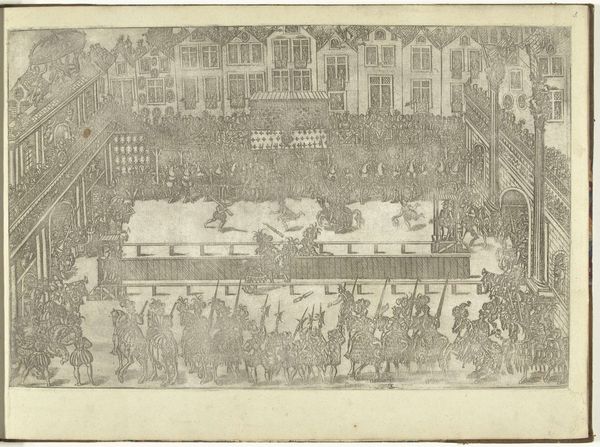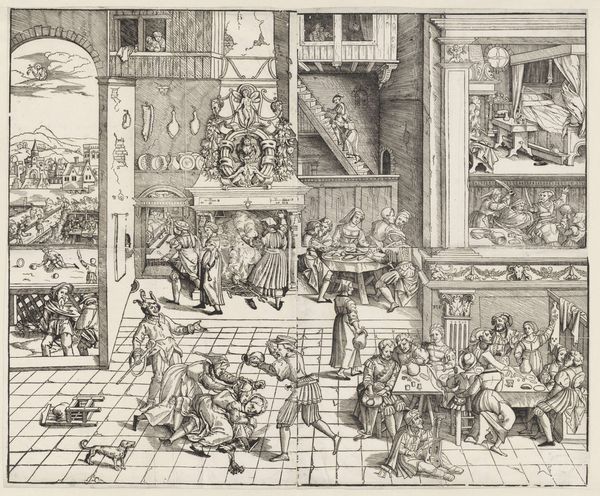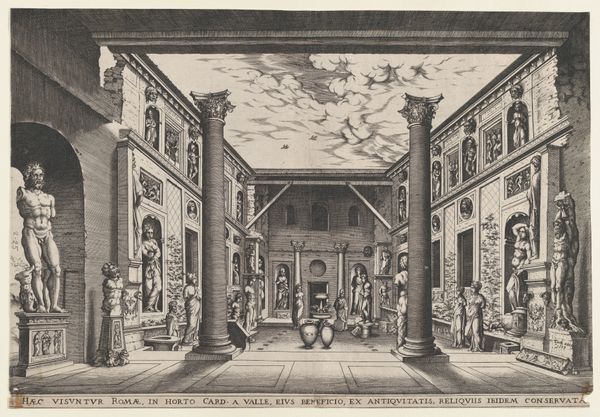
Ichikawa Danjūrō II (?) Performing Shibaraku in the Ichimura Theater 1728 - 1748
0:00
0:00
print, woodblock-print
#
toned paper
# print
#
asian-art
#
ukiyo-e
#
japan
#
figuration
#
woodblock-print
#
genre-painting
#
mixed media
Dimensions: H. 16 3/4 in. (42.5 cm); W. 25 in. (63.5 cm)
Copyright: Public Domain
Curator: This dynamic image captures the electrifying atmosphere of a Kabuki theatre in eighteenth-century Japan. The woodblock print, likely dating from 1728 to 1748, is attributed to Torii Kiyotada, and it is believed to depict Ichikawa Danjūrō II in the iconic Shibaraku role at the Ichimura Theater. Editor: It's striking how Kiyotada manages to compress such an immense space—the entire theater and a dramatic performance—into a single, comprehensible plane. The dynamism relies so much on the implied geometry; the lines of the architecture almost pin the bustling figures to the frame's center. Curator: Precisely. Note the calculated use of perspective to convey the sheer depth of the theatre. Each tier of spectators is meticulously rendered. What semiotic meanings do you draw from the actors? Editor: I see in those figures not just characters but types; the audience especially seems like a coded cross-section of Edo society, all vying for visibility within this shared, ritualistic space. Were such gatherings typical, democratizing even? Curator: Kabuki performances were a vital part of the urban experience during the Edo period, attracting audiences from different social classes, although seating arrangements usually reinforced class divisions. The depiction of Ichikawa Danjūrō II, if accurate, carries a weight too; this actor essentially created the ‘Shibaraku’ role, infusing the hero with themes of justice and bravery. This print disseminates a persona just as powerfully as it depicts one. Editor: The subdued palette surprises me; a restrained tonal range uncharacteristic of a theatrical sensibility—though perhaps, that very contrast subtly underscores the transgressive, counter-cultural edge that performances such as these could represent? Or maybe, such 'quietness' helps focus on the characters and not distract with superficial colors. Curator: Indeed. Prints like these served a critical function, publicizing actors, plays, and even shaping cultural tastes and trends. That said, I see the paper not so much in the way that it frames the image, as for the texture it provides; an essential aspect that heightens the dimensionality. Editor: True. It shows how interconnected aesthetics and the cultural scene of Edo really were. This woodblock prints gives the theatre back to its spectators. Curator: Yes, and as such, reveals a powerful intersection of popular entertainment and visual culture from that period. Editor: Exactly. A fascinating window into the past and its obsessions—revealed in the choices of tone, line, and, of course, context.
Comments
No comments
Be the first to comment and join the conversation on the ultimate creative platform.
